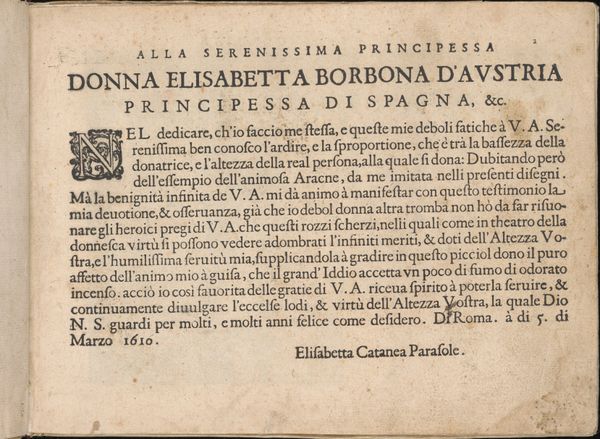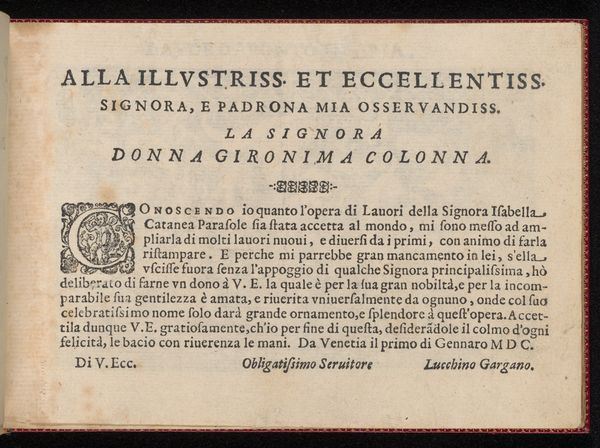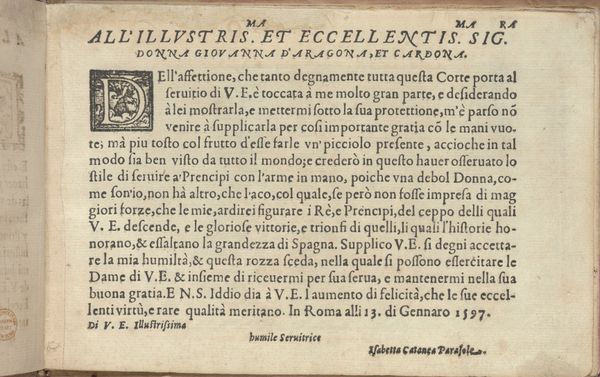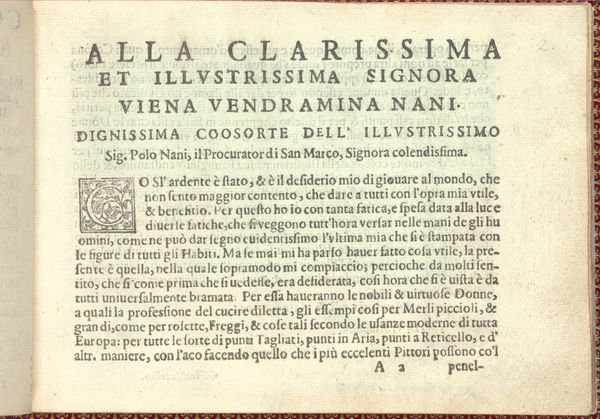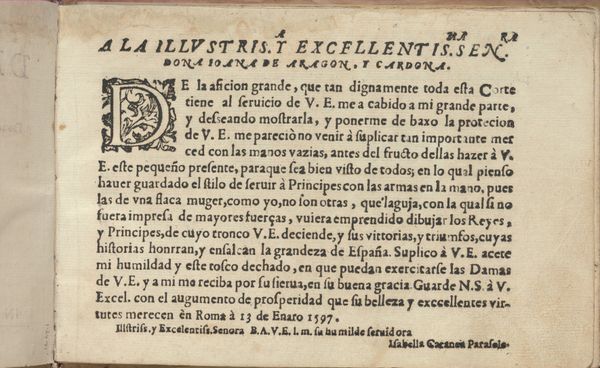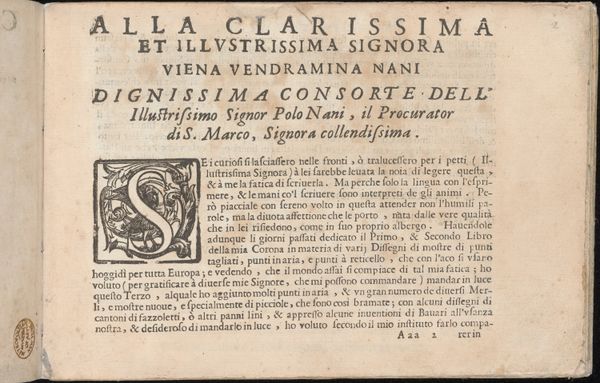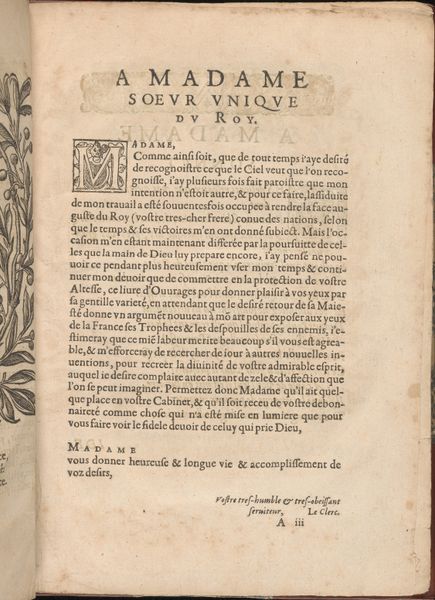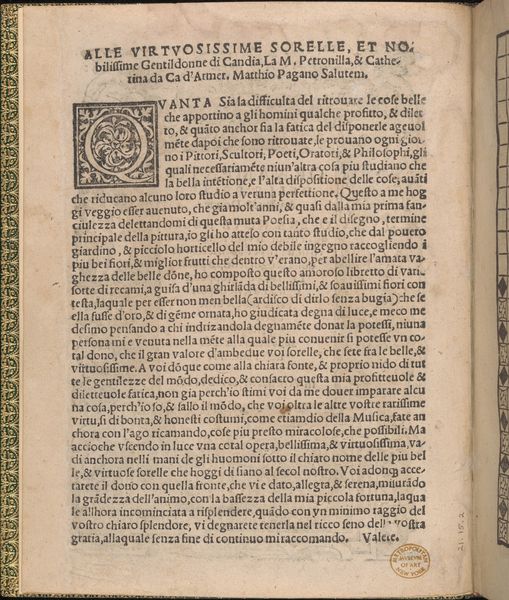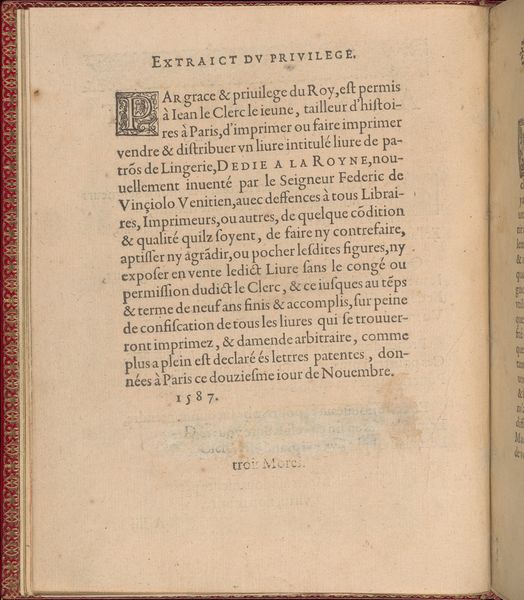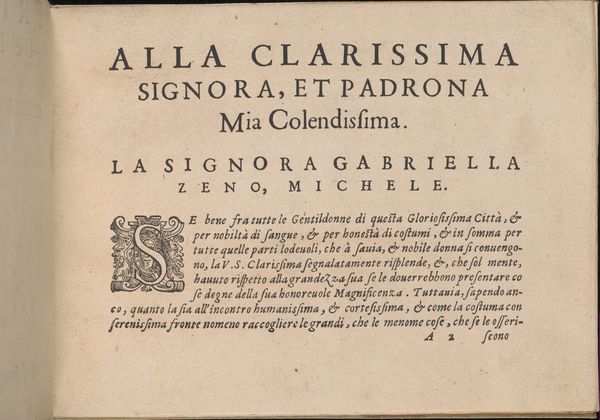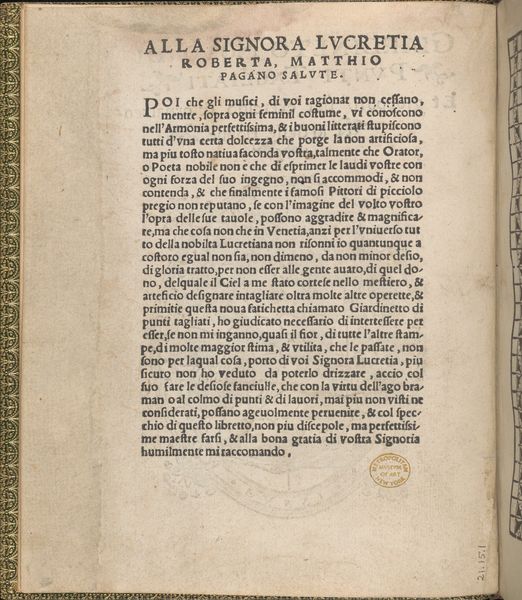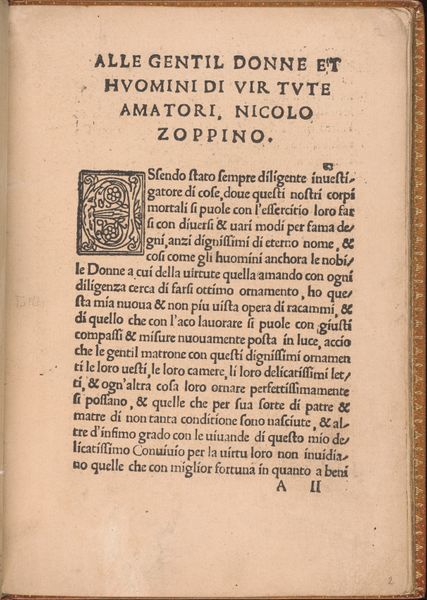
Teatro delle Nobili et Virtuose Donne..., page 2 (recto) 1616
0:00
0:00
drawing, print, paper
#
drawing
# print
#
book
#
paper
#
italian-renaissance
Dimensions: Overall: 7 1/2 x 10 7/16 in. (19 x 26.5 cm)
Copyright: Public Domain
Curator: This is a page from "Teatro delle Nobili et Virtuose Donne…", a 1616 print and drawing now held at the Metropolitan Museum of Art. It's by Isabella Catanea Parasole. My initial impression is how densely packed the text is. What do you make of it? Editor: I notice the prominent dedication at the top. It's addressed "Alla Serenissima Principessa Donna Elisabetta Borbona d'Austria Prencipessa di Spagna, &c." Everything radiates outwards from this tribute to power and lineage. I am sensing respect, reverence. Curator: Absolutely. Parasole dedicates this work to Elisabeth of Bourbon, Queen consort of Spain. Remember that Parasole's "Teatro" offered patterns for lace and embroidery—professions acceptable for noble women. So, by dedicating her work to the Queen, she validates the skills within as part of a cultivated courtly life. Editor: The prominent initial "N" at the start also strikes me. It's ornate, interwoven with foliage or perhaps lace patterns themselves. It almost presents itself as a protective portal for the message that follows, doesn’t it? And reinforces your earlier point. Curator: It does. Look also at the end, where Parasole humbly describes her designs as “rozzi scherzi"—rough sketches—even though they clearly display great skill. This self-deprecating language was commonplace, meant to showcase her humility. Editor: Yet within that humility, she’s cleverly weaving in references to theatre, “theatro della donnesca virtú”, elevating the act of creation itself into a staged performance. Isn’t that a powerful way of embedding those images with cultural currency, beyond just craft patterns? Curator: Indeed. She’s situating her creations within a sophisticated world of artistry and virtue. Also consider the printer's statement at the very bottom: "Si vendono da Maurizio Bona, à piedi di Piazza Navona". It tells us much about the commercialisation of art and its relationship to public spaces at the time. Editor: Piazza Navona, a center of Roman life, transformed into a marketplace for creativity. So, the Teatro connects intimate domestic creativity with an emerging economy of imagery, an art meant for all eyes that speaks to an ideal. Interesting to consider its implications today. Curator: Yes, this single page provides an intimate look into the interconnected worlds of female artistry, patronage, and the burgeoning print culture of the early 17th century. It highlights the important and overlooked contributions women like Parasole made to the era. Editor: It serves as a potent symbol: art carrying the aspirations and achievements of women from the private sphere into broader cultural consciousness.
Comments
No comments
Be the first to comment and join the conversation on the ultimate creative platform.
